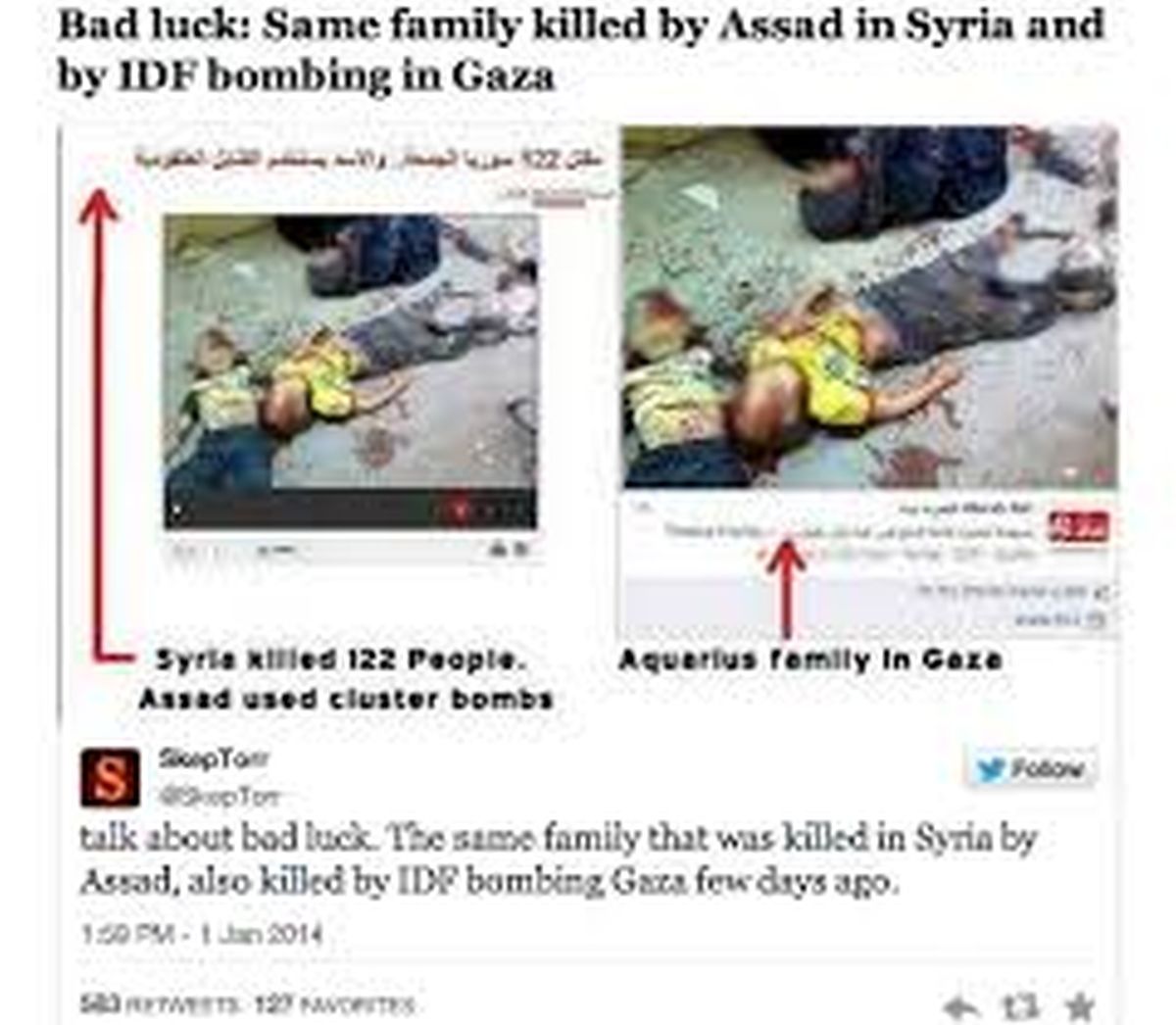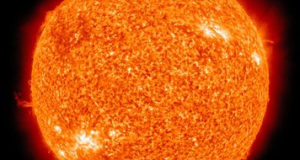 Rafah, Gaza Strip – Greenpeace International has issued a statement lauding the Islamist movement Hamas for using old photos of the civil war in Syria as part of its anti-Israel propaganda effort.
Rafah, Gaza Strip – Greenpeace International has issued a statement lauding the Islamist movement Hamas for using old photos of the civil war in Syria as part of its anti-Israel propaganda effort.
“This is not the first time images have been recycled in public relations,” said the statement by Greenpeace International Director Kumi Naidoo. “But the way Hamas reuses dramatic, relabeled photos from the conflict in Syria is worthy of emulation.” He specifically cited a photo of a crying man cradling a child killed in the fighting, which Hamas sent out via Twitter, explaining that the photo depicted a scene in Gaza’s Shifa Hospital. The original photo came from Syria and was taken in October 2012.
Another praiseworthy example, said Naidoo, was a photo of a crater from a rocket that hit the Israeli town of Netivot, relabeled as more impressive, more distant Tel Aviv.
The environmental organization also praised Hamas for efficient use of limited resources, noting that many of the homemade, shorter-range Qassam rockets aimed at the area immediately around the Gaza Strip use materials discarded or repurposed from construction projects. Metal launching tubes and the fuselages of the missiles are often produced by cutting lengths of metal sewer pipe, and other components are similarly scratched together.
The use of sewer pipe is especially beneficial, the organization said, as it means that much less pipe is available for use in removing the sewage from urban areas and into the Mediterranean Sea, where it can harm marine life.
Naidoo, in a telephone interview, said he hopes more countries and institutions follow Hamas’s lead. “One photo of a dead child is pretty much just like any other. There’s little reason to keep manufacturing new ones.” He also expressed concern over the carbon emissions generated by Israel’s Iron Dome missile interception system. “It would be better to just let the rockets land, instead of burning even more fuel to send a projectile at it. It’s going to explode soon anyway,” he said.
The statement also said that Greenpeace acknowledges the efforts by the government of Syria to reduce the number of carbon-emitting human organisms within its borders.



